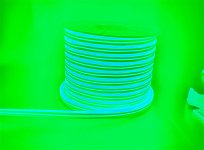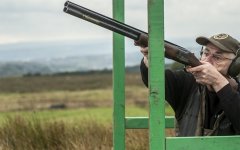So, the product is LED strips?
With the greatest possible respect, your photos don't show what it is, what it does, what it's for or why someone should buy yours rather than someone else's . . .
Some of this may be because YOU know the answers to these questions and so you haven't addressed them, there is also the fact that that product photography is really all about a combination of marketing and lighting skills and partly because of the limitations of your phone camera - there isn't a simple answer.
But, phone cameras are really designed for snapshots and record shots, not for anything more technical, and as
@Honey Monster pointed out, LED lights cycle on and off, probably at the rate of around 50 cycles per second, so you need a shutter speed of no longer than 1/25th second to avoid problems caused by one-and-a-bit cycles - can you adjust the shutter speed on your phone camera? You can on almost every "real" camera.
Secondly, the cameras on phones are extremely basic, but they have very advanced software that (for snapshots) compensates for the camera limitations. My guess is that this software is making adjustments that you don't need and don't want. It may or may not be possible to import the photos in raw format on to your computer and to then make the right adjustments, but it would be easier, quicker and probably much better to use an ordinary camera, although you will still need some computer work.
Then there's the lighting challenge. This shot is a good example

What's needed here is external lighting (flash is the preferred choice) to (effectively) balance the light from the actual product. And, without that external lighting, you simply can't get a decent shot. Some improvements can be made on computer, but if we polish a turd it's still a turd

Marks advice is good, I'd just add product shots are often "faked" several shots combined, maybe one exposure with the lights off combined with another at a different exposure with them on to show the leds with less glare.
Food photos are another item commonly faked.
As above, you may be able to achieve something better by combining photos of the product switched on and switched off, but the real answer lies in a combination of the right equipment and the right knowledge.
EDIT: This may help
https://www.talkphotography.co.uk/tutorials/photography-for-amazon-ebay.157/ The product here aren't LED, but just like your product, they emit their own light.








